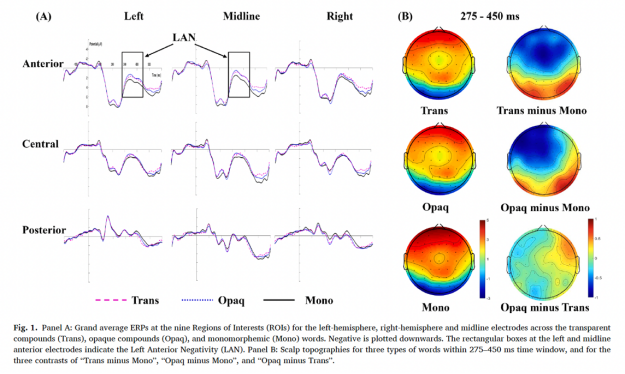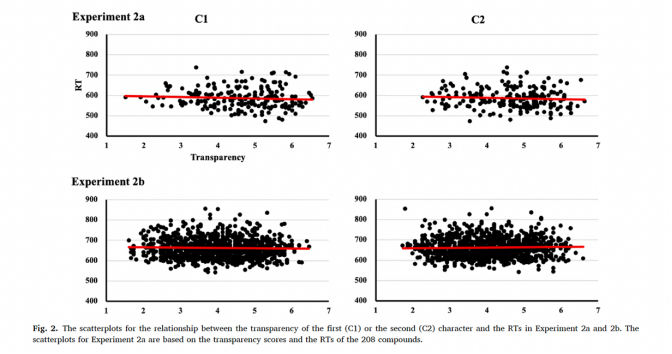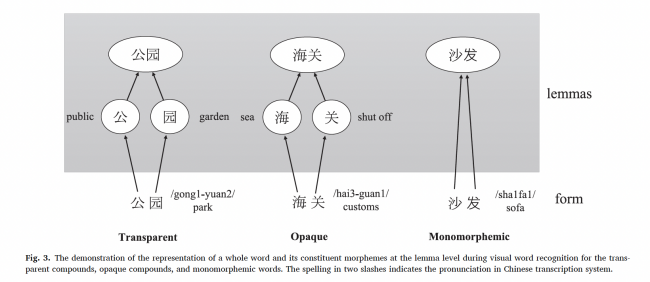In April 2023, Dr. Wei Yanjun's research team of full-time researchers at the Base published a paper titled "Morphological decomposition in Chinese compound word recognition: Electrophysiological evidence" in "Brain and Language." The study investigated the neural mechanisms underlying the processing of Chinese compound words which were influenced by morpheme complexity and semantic transparency.
The ERP experiment used a visual lexical decision task. The results indicate that both high-transparent (e.g. park) and low-transparent bi-syllabic compound words (e.g. customs) elicited a stronger left anterior negativity (LAN), compared to bi-syllabic monomorphemic words (e.g. sofa) (as shown in Figure 1). This implies that Chinese compound words are decomposed into morphemes at the lemma level, while monomorphemic words are accessed directly at the word-form level (as shown in Figure 3). This study provides the first evidence of the neural marker LAN for the morphological decomposition processing of Chinese compound words and supports the full-parsing model.

In addition, high and low transparency compound words produced similar N400 (see Figure 1, experiment 1), and word judgment accuracy and response time (experiments 2a and 2b, see Figure 2) were not affected by the semantic transparency of the two morphemes. These similar patterns together show that the semantic connection between the morpheme and the whole word in compound words does not affect the recognition of the whole word. This is because Chinese morphemes are very productive. For example, the morpheme of "sea" can produce "ocean", "maritime", "shipwreck", "customs", "overseas" and so on. Morpheme productivity makes many different semantics of a morpheme form a large family of closely related morphemes, so semantic transparency no longer plays a role in compound word recognition.


Dr. Yanjun Wei is the first author and corresponding author of the paper. His collaborators are Niu Ying, a master's student at the Reference Base; Professor Marcus Taft from the University of New South Wales, Australia; and Professor Manuel Carreiras from the Basque Center for Cognition, Brain and Language, Spain. The first signed unit of this paper is the Key Laboratory of Language and Cognitive Science of Ministry of Education (Beijing Language and Culture University). This paper is also the research result of the Language and Cognitive Science Innovation and intelligence Base of Beijing Language and Culture University. This paper is supported by the Youth Project of Humanities and Social Science Foundation of Ministry of Education.
Information of Paper:
Wei, Y., Niu, Y., Taft, M., & Carreiras, M. (2023). Morphological decomposition in Chinese compound word recognition: Electrophysiological evidence. Brain and Language, 241, 105267.
https://doi.org/10.1016/j.bandl.2023.105267.